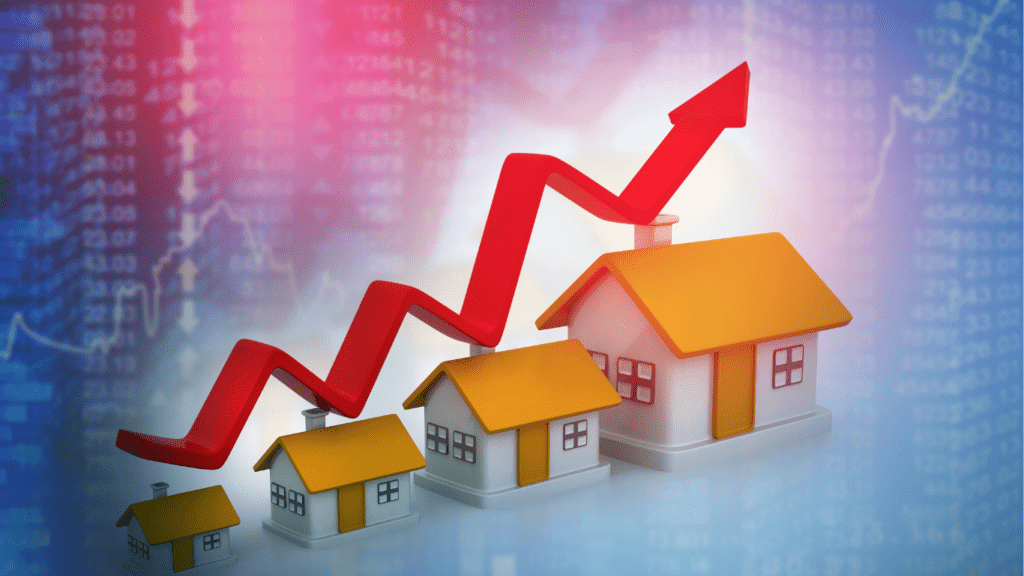Overview Of Commercial Real Estate Growth
The commercial real estate sector has experienced notable expansion due to urbanization and evolving business needs. Key factors include the increasing demand for adaptable office spaces, the surge in e-commerce driving warehouse construction, and the appeal of mixed-use properties combining residential, retail, and commercial spaces.
Technological advancements play a central role in driving growth. Smart building technologies, like IoT sensors and AI-driven insights, are enhancing operational efficiency and tenant satisfaction. Digital platforms streamline property transactions, making investments more accessible.
Shifting work trends, such as hybrid work environments, influence property utilization. Companies are reconfiguring spaces to prioritize collaboration areas and employee amenities, adapting to workforce expectations.
Investment in secondary cities has risen significantly, with markets like Austin and Nashville offering growth opportunities due to lower costs and high demand. Additionally, the growing focus on sustainability is reshaping construction priorities, emphasizing energy-efficient buildings and greener materials.
Commercial real estate growth remains dynamic, shaped by market trends, technological integration, and evolving business strategies.
Key Market Trends Driving Growth

The commercial real estate sector’s growth is influenced by evolving market dynamics and transformative trends. These trends reflect changes in consumer preferences, environmental priorities, and business strategies.
Demand For Mixed-Use Properties
Mixed-use developments have gained appeal due to their ability to meet diverse needs within a single space. These properties integrate residential, retail, and office components, creating self-contained communities. Urbanization and consumer interest in convenience are driving this demand. Examples include developments in cities like Miami and Chicago that combine residential units with shopping centers and coworking spaces, enhancing livability and accessibility.
Expansion Of Retail Spaces
- Despite e-commerce growth, retail spaces are expanding in strategic formats.
- Retailers are investing in experiential stores, outlet malls, and urban retail hubs rather than traditional malls.
- Markets in densely populated areas such as Los Angeles and New York are experiencing heightened activity.
- The emphasis is on creating engaging environments that promote foot traffic and personalized shopping experiences to complement online sales.
Rise Of Sustainable Real Estate Practices
Sustainability is reshaping development and investment priorities.
- Green certifications like LEED and the use of energy-efficient designs contribute to operational savings and appeal to eco-conscious tenants.
- Builders are incorporating renewable energy systems and low-impact materials to meet environmental regulations.
Examples include projects in Seattle and Denver, where developers are achieving significant energy reductions by integrating solar panels and advanced insulation techniques.
Regional Highlights In Commercial Real Estate
Urban markets and suburban areas are experiencing significant shifts, driven by changing demographics, business strategies, and technological advancements. Regional trends reveal unique growth patterns that are redefining commercial real estate dynamics.
Growth In Urban Markets
Urban centers are adapting to increased demand for mixed-use developments and innovative office spaces.
- Cities like New York and San Francisco are seeing a resurgence in high-rise commercial projects.
- Downtown redevelopment initiatives are rejuvenating older neighborhoods and attracting investments in retail and entertainment sectors.
- In tech-driven markets like Seattle and Austin, smart building adoption continues to elevate property values and tenant demand.
Suburban Expansion Trends
Suburban regions are benefiting from the migration of businesses and residents seeking affordability and space. Markets like Phoenix and Charlotte are emerging as hubs for logistics facilities, supported by growing e-commerce needs. This expansion integrates lifestyle-focused retail spaces and coworking hubs, catering to remote workforces. Developers are prioritizing infrastructure enhancements to sustain long-term growth in these areas.
Technology’s Role In Transforming The Industry
Technological advancements are redefining commercial real estate by driving efficiency and expanding opportunities. Innovations like PropTech and data analytics are empowering stakeholders to make informed decisions and streamline processes.
PropTech Innovations
PropTech, or property technology, integrates digital tools into real estate operations to enhance management and growth. Smart building systems optimize energy usage, improve security, and provide predictive maintenance through IoT sensors. Platforms like Matterport and Zillow 3D Home offer immersive virtual property tours, enabling remote buyers and tenants to evaluate spaces online. Blockchain technology simplifies transaction processes by increasing transparency in property records and contracts. Startups like Propy and Brickblock are leading these efforts.
The Impact Of Data Analytics
Data analytics enhances market analysis, investment decisions, and property management. Real estate firms leverage predictive analytics to identify emerging markets and forecast trends, such as the shift toward secondary cities. Platforms like CoStar and Reonomy aggregate data on property performance and tenant behaviors, helping landlords optimize rental pricing and reduce vacancies. Location data, sourced from GPS and social metrics, informs site selection for retail and commercial developments to maximize foot traffic and accessibility.

 Leila Hamilton played a key role in shaping Mode Key Homes, contributing her expertise in real estate trends and sustainable housing. Her dedication to delivering insightful content ensures that homeowners, investors, and industry professionals stay informed about market developments and innovative property solutions.
Leila Hamilton played a key role in shaping Mode Key Homes, contributing her expertise in real estate trends and sustainable housing. Her dedication to delivering insightful content ensures that homeowners, investors, and industry professionals stay informed about market developments and innovative property solutions.